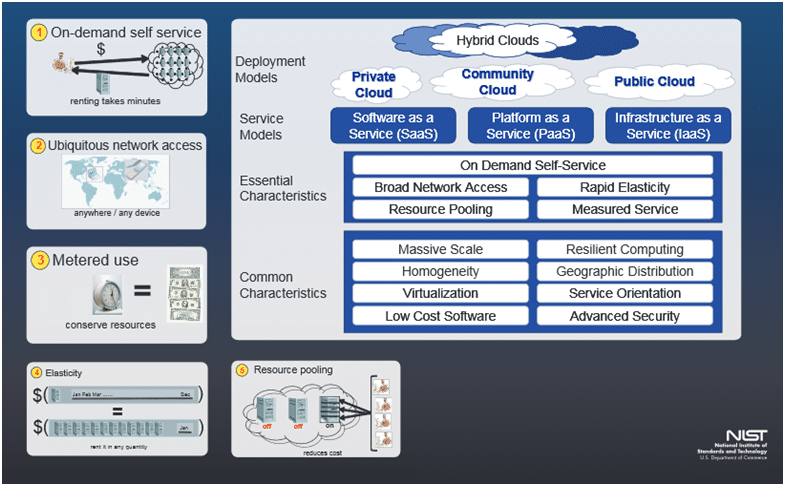An Overview of Cloud Computing & The Importance of Cloud Testing
Cloud computing is no longer a new technology trend; adoption of cloud computing is increasingly being considered by organizations as an appropriate and promising option in the recent years for not only reducing the costs but also to position their offerings / services competitively. It has transformed the way business is conducted, service delivered and technology consumed.
[Tweet ““Gartner Says Worldwide Public Cloud Services Market Is Forecast to reach $204 Billion in 2016, up from $175 billion in 2015””]
Cloud computing offers economic advantages, speed, agility, scalability, accessibility and flexibility and innovation. Organizations have started to look at cloud computing as a strategic move that impacts their businesses, rather than just as a cost-effective approach. CXOs are constantly adapting their IT strategies so as to leverage the advantages of the cloud. Organizations are becoming more responsive than ever by embracing cloud computing for their software, solutions, applications, and infrastructure. Due to the growing trend of organizations adopting a digital business strategy, the IT industry is witnessing a strong growth of cloud adoption indicating a shift away from legacy IT services to cloud-based services.
[Tweet “IDC predicts cloud IT infrastructure spending will grow at CAGR of 15.1% from 2014 to 2019, reaching $53.1B billion by 2019.”]
The Factors to Consider While Adopting Cloud Computing
Cloud adoption requires careful planning, execution, and management for the long term to derive the desired results; hence, it is a major decision for any organization. The process of cloud adoption begins with identifying the right cloud provider, transitioning client servers / web server hosted systems to the cloud, and finally implementing suitable automation / third-party tools to enable migration, all the while giving importance to testing to ensure that the data, software or applications migrated to or hosted on cloud work as intended. Below are the three major factors to be considered while adopting cloud:
- Organizations have to evaluate the suitability of deployment models available – private cloud, public cloud and hybrid cloud (an integrated cloud utilizing both private and public clouds) and choose the best option that aligns well with their business goals.
“The market for public cloud services is continuing to demonstrate high rates of growth across all markets and is expected to continue through 2017,” said Sid Nag, Research Director at Gartner
- Similarly, Organizations need to assess the three cloud service models- SaaS, PaaS, and IaaS – available in the market for their business.
Gartner predicts that the highest growth will come from cloud system infrastructure services (infrastructure as a service [IaaS]), which is projected to grow 38.4 percent in 2016.
- Cloud computing involves five essential characteristics – on-demand self-service, broad network access, resource pooling, rapid elasticity and measured service. Organizations going for cloud adoption have to consider the availability of these characteristics as well.
An Overview of Cloud Computing
The Challenges of Adopting Cloud Computing
Organizations benefit significantly by adopting cloud computing if they can mitigate the substantial challenges of transitioning to a cloud model. Some of such challenges are:
- Complying with cloud-specific requirements by redesigning the application architecture
- Determining delivery mechanisms for the cloud
- Dealing with issues such as data migration, performance, availability, and scalability
- Ensuring data security, accessibility, and privacy
Importance of Cloud Testing
Cloud testing has become critical to effectively sail through the above-mentioned challenges. However, cloud testing approach or strategy is considerably impacted by the deployment models, service models or any one or more of essential characteristics of cloud computing. Testing teams have to pay attention to the non-functional aspects such as performance, security, compatibility, environment management, integration with various interfaces, user experience, etc. as they get impacted for the software, applications or solutions by transitioning to the cloud.
[Tweet ““Global Cloud Infrastructure Testing market to grow at a CAGR of 16.5 percent over the period 2014-2019.” – TechNavio’s Analysts”]
Cloud-based test environments can be built and used for testing purposes as needed for a limited period of time. Below are some aspects of cloud testing that help organizations offer high-quality services to their customers:
- Stress testing, Performance testing and Load testing of applications hosted on the cloud by generating loads as necessary leveraging cloud environment
- Security testing of an application hosted on the cloud to know if the security framework provided is accurate or not
- Integration testing of applications which are hosted on various clouds
- Compatibility testing of applications hosted on the cloud by creating instances of different operating systems utilizing cloud environment
An experienced testing partner, who has in-depth domain expertise across various cloud service models, deployment models and essential characteristics, can only enable successful migration of your data and applications to the cloud and their functioning and performance. Reach us at contact@cigniti.com to know about our testing services for your cloud-based software or applications.






Leave a Reply